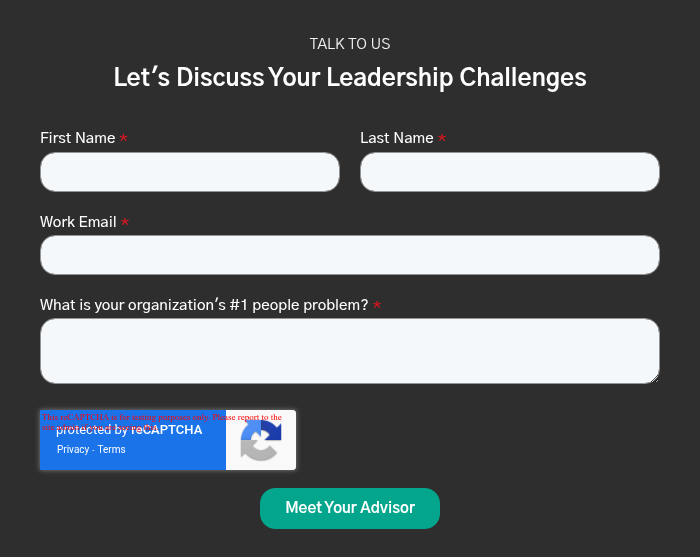
Getting honest feedback from your team isn’t easy. Even if you’ve worked hard to build trust, there’s often a quiet hesitation that holds people back. Some of it comes from past experiences like bad bosses, broken promises, or seeing others punished for speaking up. Other times, it’s just the unspoken rule that says, “Don’t rock the boat.”
But here’s the thing: You can be doing everything right as a leader, genuinely wanting to improve, build a better culture, and support your team and still hit a wall when asking for feedback.
At The Metiss Group, we’ve seen this play out over and over again. People carry “head trash” from previous jobs. Or they’ve absorbed fear from stories they’ve heard like friends, family, former colleagues. That’s why meaningful, open feedback is rare. It usually only happens in environments with deep trust and a long runway of shared history.
In this article, we will explore a few different solutions:
- How to Facilitate Open Discussion in a High-Trust Work Environment
- Stay Interviews: The Key to Preventing Exit Interviews
- Top Features of Strong 360-Degree Feedback Tools That Drive Growth

How to Facilitate Open Discussion in a High-Trust Work Environment
When your team knows each other well and there’s already a solid foundation of trust, you’ve got a real opportunity to have meaningful conversations. One of the simplest but most powerful tools in your back pocket? The Start, Stop, Continue exercise.
But here’s the key, it’s all about how you tee it up.
Let your direct reports know you’ll be meeting with them one-on-one next week to ask for their perspective:
- What’s one thing you think we should start doing?
- One thing we should stop doing?
- And one thing we should definitely continue doing?
Keep it to just one or two points in each category. If you don’t set a clear ask, you’ll likely get vague answers like, “Everything’s fine,” or “Keep doing what you’re doing,” which doesn’t help anyone grow.
Give them a heads-up in advance. That space lets people think, reflect, and bring more thoughtful feedback to the conversation.
And when you sit down with them, don’t get defensive. No justifying. No explaining. Just listen. Say thank you. Jot it down.
Then, once you’ve met with everyone, follow up with the group. Share what you heard (anonymously), what themes emerged, and what actions you plan to take. That follow-through is what builds trust over time.

Stay Interviews: The Key to Preventing Exit Interviews
Exit interviews are too little, too late. By the time someone’s walking out the door, they’re either sugarcoating their experience to keep the peace, or they’re unloading all the things that went wrong when nothing can be done to fix it.
But what if you didn’t have to wait until someone resigns to find out what’s working… and what’s broken?
That’s where stay interviews come in.
Think of them as preemptive conversations with your rockstars—the people you can’t afford to lose. Schedule time with them and make it clear: “You matter here. You’re important to our future. I want to understand what makes this a place you’d want to stay for a long time—and what might push you away.”
Let them prepare ahead of time. You can use the same Start, Stop, Continue exercise as a jumping-off point. Then go deeper:
- What motivates you right now?
- Where do you want to be in 3 to 5 years?
- How can we support your growth and goals?
This isn’t about fixing everything in one conversation. It’s about showing them they’re seen, they’re heard, and their future here matters.
And over time, these conversations don’t just boost retention, they build a culture where feedback flows in both directions.

Top Features of Strong 360-Degree Feedback Tools That Drive Growth
Let’s be real: most 360° feedback tools don’t live up to the hype.
You can send out a SurveyMonkey or TinyPulse link and promise anonymity but that undercurrent of mistrust we talked about earlier? It still shows up. People hesitate. They sugarcoat. They stay vague. And you’re left with data that looks clean on the surface… but doesn’t actually help anyone grow.
So how do you get around that?
Start by bringing in a neutral third party, someone outside your organization who can collect and present the data without anyone fearing blowback. That buffer makes a huge difference.
But it’s not just about who runs the process. It’s about how the tool is built.
Most 360° tools rely on what’s called a Likert scale, those 1-to-5 or “never-to-always” style ratings. The problem? They’re easy to game. Rater biases sneak in. And worse, they can be weaponized by the person giving the feedback or even against the person receiving it.
That’s why at The Metiss Group, we’re big believers in the 360° Leadership Effectiveness Analysis from Management Research Group (MRG). It ditches the Likert scale for a semi-ipsative format which is a fancy way of saying it compares leadership behaviors against each other instead of in isolation.
It’s hard to manipulate. It highlights patterns. And when it’s unpacked with a coach, the insights are surprisingly eye-opening.
Leaders walk away seeing their real strengths, the perceptions they need to shift, and the areas where they can grow with a timeline and clear goals attached.
Even better, this tool can be tied directly to your organization’s strategic priorities so development isn’t just about feeling good. It’s about moving the business forward.
Bottom line? If you want meaningful feedback that actually drives change, don’t settle for cheap tools or shortcuts. Do the work. Use the right systems. And create the kind of trust that makes real feedback possible.
Download the EQ 360 and discover how developing emotional intelligence can transform your team’s performance.
Wrapping It All Together
If there’s one thing we’ve learned, it’s this: feedback isn’t about forms, scores, or anonymous surveys. It’s about trust. Real, lasting, earned trust, the kind that makes people feel safe enough to speak up, and valued enough to believe their voice actually matters.
Whether you’re sitting down for a one-on-one Start, Stop, Continue chat, holding a stay interview with your top talent, or investing in a sophisticated feedback tool, what matters most is how you show up.
If your people sense that you’re genuinely listening, not defending, not explaining, just listening, they’ll meet you there.
Not all at once. Not perfectly. But over time, those walls start to come down.
So don’t rush the process. Don’t skip the prep. And don’t underestimate the power of a thoughtful, human-centered approach.
Because when feedback is real, growth follows.

Topics: